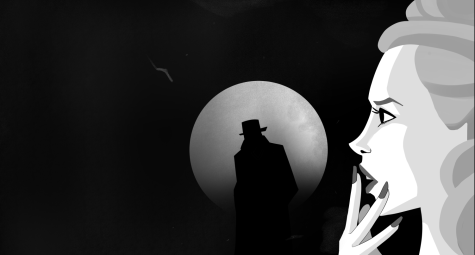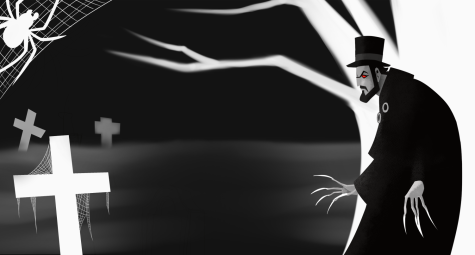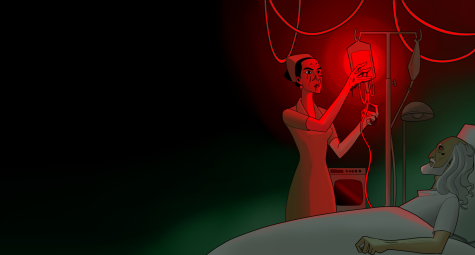High Five: Exploring obscure retro Latin horror
October 11, 2022
With Hispanic Heritage Month in full swing and Halloween just around the corner, it’s a good time to explore how different Latin countries have contributed to the horror genre. Latin is referring to countries where one of two Latin languages are spoken, Spanish or Portuguese. Each film listed has something different to offer for a variety of horror tastes. If you’re interested in broadening your horror library this Halloween, hopefully these rare, obscure and underrated films will satisfy.
1. El vampiro negro (The Black Vampire)

Director: Román Viñoly Barreto
Country: Argentina
Year: 1953
“The Black Vampire” is a loose remake of Fritz Lang’s 1931 classic “M.” Both films are centered around a serial killer who targets young girls and how his crimes impact the community. This version departs from the 1931 version with a more character-driven narrative as opposed to the police procedural story featured in “M.” This shift allows the film to explore its characters and the effects of the killer’s actions in more depth. A good example is Rita, a cabaret singer and single mother, who spots the killer disposing of a body. Argentine actress Olga Zubarry turns out a stunning performance as we follow her moral dilemma: torn between going to the police and putting her employment in jeopardy or staying silent and supporting her daughter. We also see great performances from the rest of the cast, including Nathán Pinzón, whose performance as the lead villain rivals Peter Lorre’s in the original. The whole narrative is tied together by wonderfully expressive cinematography, using clever lighting tricks, tight closeups and heavy shadows to create a brooding atmosphere and sense of danger. If you’re looking for a character-driven noir horror thriller this Halloween, then this one’s for you.
2. À meia-noite levarei sua alma (At midnight I’ll take your soul)

Director: José Mojica Marins
Country: Brazil
Year: 1964
This is the first Brazilian horror film and the beginning of the Coffin joe trilogy. Coffin Joe is a horror icon in Brazil akin to Freddy Krueger in the U.S. Of all the media featuring the character, his debut film is one of my favorites as it tells the most concise story. We follow Joe, or Zé, a thoroughly detestable small-town undertaker who enjoys terrorizing the superstitious locals. He eats meat during Lent, desecrates shrines and brutalizes anyone who crosses him. Zé is seeking an heir from an ideal woman and will do anything to have it. His striking wardrobe, bizarre motives and a flawless performance from the director himself make him a memorable villain. Marins also did an outstanding job creating an ominous atmosphere with superb imagery throughout. The movie is public domain so it can be easily accessed online. Be warned, it’s a very violent movie, especially for the ‘60s.
3. ¿Quién puede matar a un niño? (Who Can Kill a Child?)

Director: Narciso Ibáñez Serrador
Country: Spain
Year: 1976
Out of all the films listed here, I found this one to be the most disturbing. “Who Can Kill a Child?” follows a British couple vacationing in Spain who arrive on an island overtaken by violent children. Our lead characters, who are parents, must confront their reservations about defending themselves. While similar to other killer-kid films such as “Children of the Corn,” this one approaches the trope in a unique way. It puts the morality of hurting the evil children front and center, and the way it delivers on its premises is even more shocking. The island’s setting of white stucco homes and empty streets cement the atmospheric dread, aided of course by its skulking cinematography. Based on the novel “El Juego de los Ninos (The Children’s Game)” by Juan José Plans and adapted by Spanish director Narciso Ibáñez Serrador, this hidden gem is sure to keep you on the edge of your seat.
4. Pura sangre (Pure Blood)

Director: Luis Ospina
Country: Columbia
Year: 1982
When his father is diagnosed with a rare blood disease, Adolfo, a sugar magnate, turns to blackmailing three killers into securing the blood he needs. Taking place in Cali, Colombia, the film’s events loosely resemble the crimes of an unidentified serial killer known as “The Monster of Magnones,” who preyed on young boys. Like “El Negro Vampiro,” the film resembles real crimes but creates its own separate narrative. Adolfo is presented as a nervous, desperate and shady man who inherited an empire from his ill father. He fears losing his father’s guidance and resorts to unscrupulous activities to keep him alive. As the film continues and his grip on the family business loosens, he resorts to further shady dealings out of self-preservation. This bleak tragedy is populated by interesting characters, like our trio of killers consisting of Ever, Perfecto and Florencia, who each bring something different to the film. We’re given a one-sided story – there are no heroes, but there’s depth and conflict to our villains that creates an entertaining horror feature.
5. Cronos

Director: Guillermo del Toro
Country: Mexico
Year: 1993
An alchemist leaves behind a golden device, known as the Cronos, which grants its wearer eternal life at a deadly price. This was one of Del Toro’s first feature films, and though not my favorite of his, it’s still a standout film. Most will recognize the obvious theme of addiction present in the Cronos. We follow an elderly antiques dealer named Jesús who starts out as an empathetic character caring for his granddaughter. As the film progresses, his reliance on the Cronos becomes debilitating as the device gives him youth and vigor but causes him to develop a craving for blood. His addiction also puts him into conflict with those seeking out the power of the Cronos. The most disturbing aspect of the film is witnessing our main character lose his humanity and how it affects those around him. The story is carried by an excellent cast that turns out great performances, along with great creature designs, set dressing and excellent filmmaking. Del Toro’s direction in this film is masterful and hinted at what was to come from this critically acclaimed director. You can find this movie on YouTube, Amazon Prime and many other streaming services.





